The eighteenth-century travel diary of a captain’s son
In the previous part of this blog, I introduced the impressive travel diary of captain’s son Nicolaas Abraham van Rijneveld (1766-1849), Reize naar de Middelandsche Zee (Journey to the Mediterranean Sea) (1803). Between 1783 and 1786, Nicolaas was on board the Noordholland (North Holland), the ship of the line commanded by his father, Captain Daniël Jan van Rijneveld (1742-1795). In his travel diary, Nicolaas precisely recorded when the ship was somewhere. It is therefore possible to reconstruct their sailing route. Such a reconstruction not only provides insight into life at sea, but also into travel in the eighteenth century. How long did a sailing trip take? Where did sailing ships sail past? What problems did sailors face? And how were these resolved? Reize naar de Middelandsche Zee provides us with an insight into the world of the eighteenth-century sailor. In this blog, I will discuss the sailing route of the Noordholland.
 View of the New Port of Texel. Source: Mathias de Sallieth, after Dirk de Jong, 1781-1787, Rijksmuseum Amsterdam.
View of the New Port of Texel. Source: Mathias de Sallieth, after Dirk de Jong, 1781-1787, Rijksmuseum Amsterdam.
The ship departed Texel on 13 December 1783, with a fleet of Dutch ships of the line – the ships ‘lifted […] their anchors and set sail’. (Van Rijneveld 1803: 3) They sailed past The Lizard and Mount’s Bay on 18 December, and past Cape St. Vincent and Lagos on 8 January of the new year. The fleet arrived in Malaga at 6:00 p.m. on 11 January, where it remained in port for over ten days. This provided Nicolaas with the opportunity to visit the inland. In Reize naar de Middelandsche Zee, he extensively describes the economy, culture, and people he comes into contact with. He believes the men of Malaga to be ‘arrogant to their core, distrustful, and [...] vicious’, and ‘The common people of Malaga are very thiefish and murderous’. (9) On 22 January, the fleet sailed out to sea again.
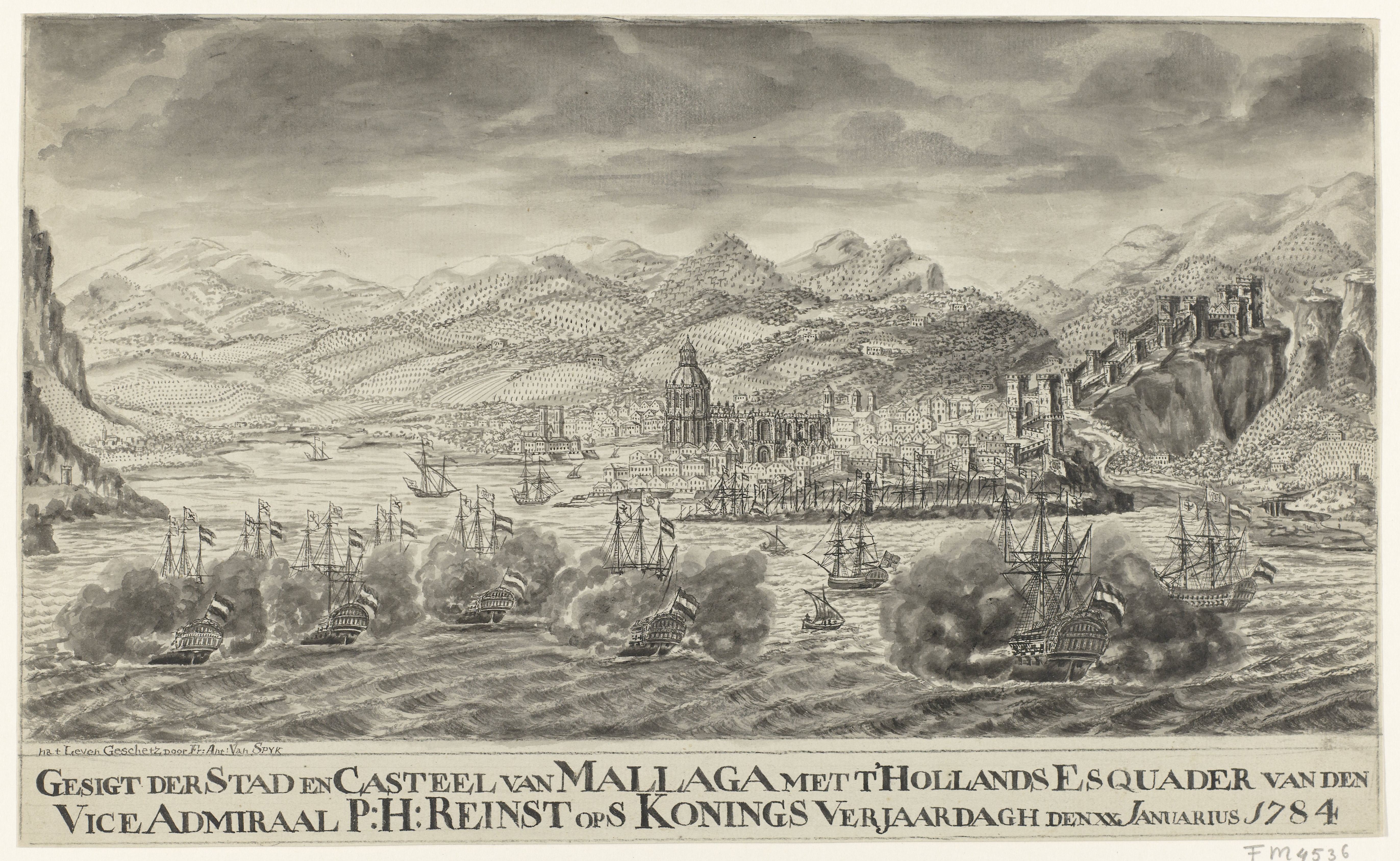 Dutch war fleet nearing Malaga for celebrating Charles III’s birthday, 1784. Source: Frans Anton van Spijck, 1784, Rijksmuseum Amsterdam.
Dutch war fleet nearing Malaga for celebrating Charles III’s birthday, 1784. Source: Frans Anton van Spijck, 1784, Rijksmuseum Amsterdam.
The ships were in the Golfe du Lyon on 2 February. A day later, a violent storm broke out (see part I of this blog about this), to which the ships were subjected for about two weeks. On 16 February, the badly damaged Noordholland, with its exhausted and hungry crew, stranded near Corsica. The ship received practica (permission to come ashore) after three days. On 23 February, a ship from the capital Ajaccio provided the crew with provisions, ‘which was very pleasant and welcome to [them]’, for the sailors had lost almost all their supplies due to the storm. (40) Because the Noordholland could only be partially repaired in Corsica, the ship was forced to sail to Toulon on 29 April after some fixes, where the ship could be fully repaired. On 8 May, the Noordholland made port there. While the ship was being repaired, Nicolaas visited Toulon. In his travel journal he wrote that ‘The women [there] are overall well made, and wear, to a graceful posture, loose casual thin clothing, suitable to the heat of the region, giving them an attractive appearance’. (67) After more than 2.5 months – and 52 thousand guilders – the Noordholland was fully repaired. On 6 August the ship set sail for sea again.
On the afternoon of 17 August 1784, the ship sailed past Cabo de Palos, and on 19 August they spotted Cabo de Gata in the early morning hours. The ship arrived in Malaga four days later, where it had to spend forty days in quarantine. On 24 September, the Noordholland sailed with part of the fleet that the ship had lost during the storm toward Toulon, where the ship arrived a month later and then had to spend twelve days in quarantine. On 4 November, the Noordholland received practica, and on the 28th it left again for sea. On 5 December, the sailors spotted the island of Gorgona at 8:00 a.m., and by 5:00 p.m. they could make port at Livorno. The ship remained there for two weeks, allowing Nicolaas to visit the Italian inland. Together with some others, he made a trip to Pisa. In part III of this blog, I will discuss Nicolaas’s experiences in Pisa.
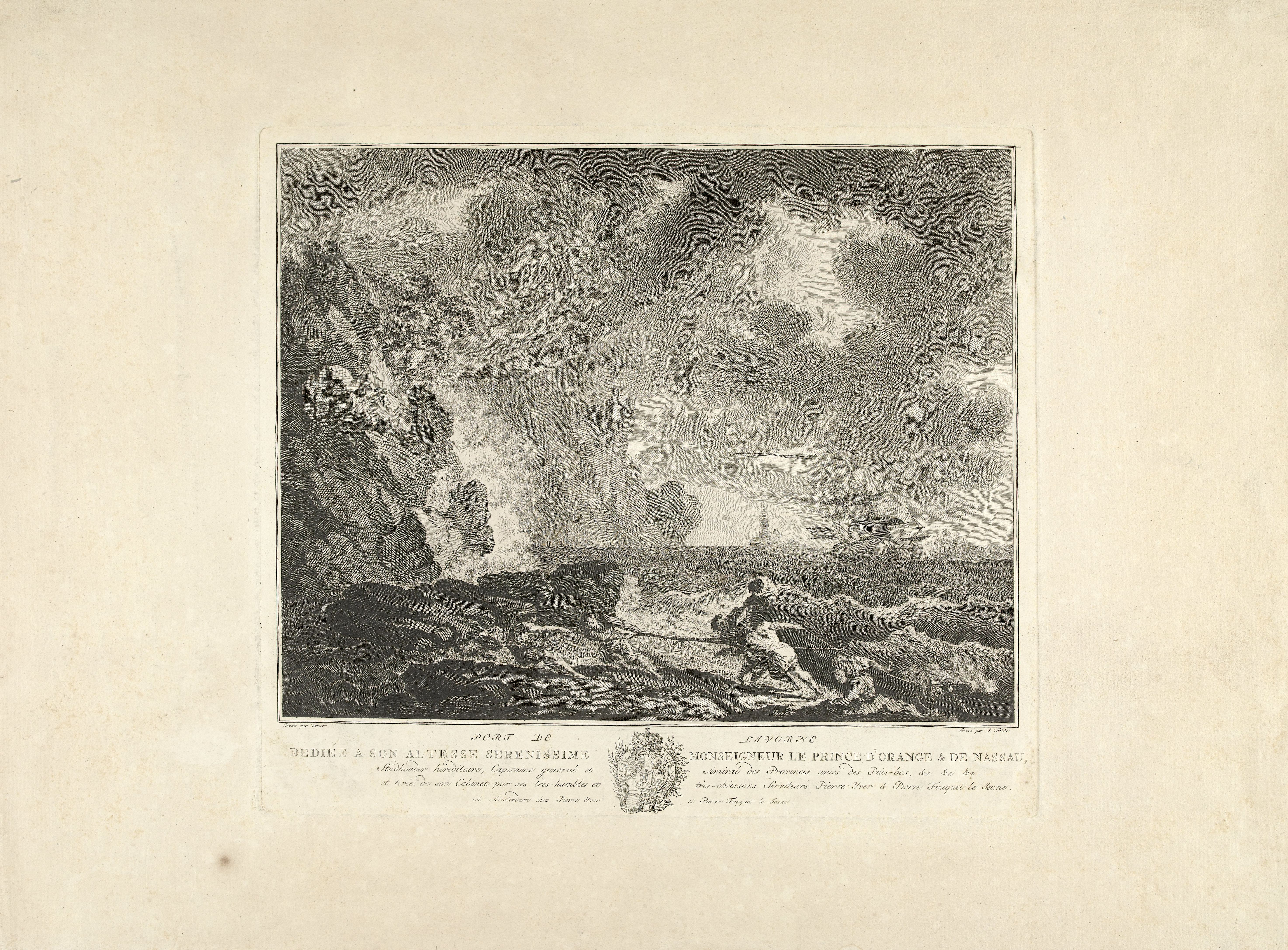 The port of Livorno. Source: Simon Fokke, after Claude Joseph Vernet, 1760-1784, Rijksmuseum Amsterdam.
The port of Livorno. Source: Simon Fokke, after Claude Joseph Vernet, 1760-1784, Rijksmuseum Amsterdam.
On 19 December, the ship sailed towards the sea again. After three days they passed Genoa. On 25 December, the Noordholland arrived again at Toulon, then in the morning of 7 January 1785, it sailed again towards the sea. At 5:00 p.m., they already passed La Madrague, and the next day Porquerolles and Port-Cros. Two days later they spotted the Catalan coast, and on 11 January the ship attempted to enter the port of Barcelona. They fired several shots, as was customary, but got no response and thus received no practica. After a few hours, they decided to sail towards Ivica (Ibiza). They arrived in Ivica’s port on 18 January; three days later they already left for Alicante, where they arrived on 23 January. Two days later the ship sailed towards the sea and on 27 January it reached the port of Malaga. On 14 February, the crew learned that a Spanish ship was in danger just outside the port. A few sailors from the Noordholland and the Gelderland (another ship in the fleet that was also in the port of Malaga) came to their aid by dinghy. Except for three or four men, the Spanish sailors were rescued by the Dutch, ‘without the Spaniards lifting a finger to bring any assistance or help to their countrymen in danger’, according to Nicolaas. (124)
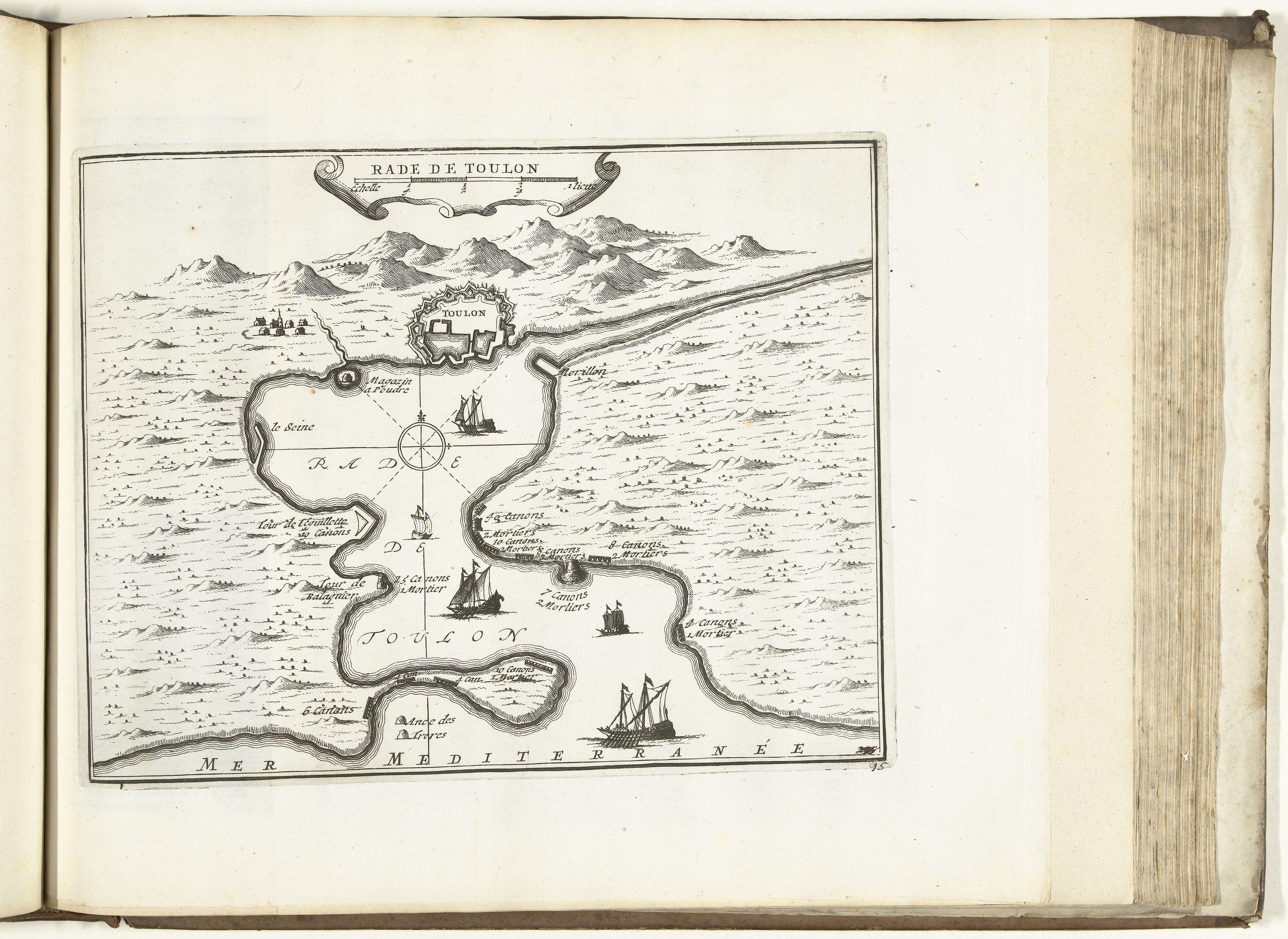 Port of Toulon, 1726. Source: anonymous, 1726, Rijksmuseum Amsterdam.
Port of Toulon, 1726. Source: anonymous, 1726, Rijksmuseum Amsterdam.
On 4 March, the Noordholland again departed for sea. The ship arrived in the port of Toulon on the 16th and stayed there for over a month, until 22 April. In the meantime, the Noordholland had formally departed from the fleet and thus sailed on as an independent ship. The sailors arrived in Marseilles on 26 April, where they stayed until 10 June. From Marseille, Nicolaas visited the regions of Provence and Languedoc, which he also describes in his diary. He did not like the food in Beaucaire; in his own words, he had ‘paid well and eaten badly’ there. (146) On 17 June they spotted the coast of Sardinia, and on 20 June the African coast. The Noordholland sailed into the port of Malta on 22 June, where it would stay for four days. On 3 July, they spotted the coast of Morea (Peloponnese); the Noordholland was between the island of Sapientza and Cape Matapan, and a day later between the island of Cerigo (Kythira), and (probably) Elafonisos. On 5 July, the ship reached the port of Elafonisos, and after five days the crew was already preparing for departure. On 11 July, the ship passed Tinos and Andros and sailed toward Cape Caphereus. Four days later, they caught sight of the island of Mitilini (Lesbos). The ship sent a dinghy to the island to investigate whether the plague was raging on the island. Fortunately, that was not the case; the Noordholland made port there.
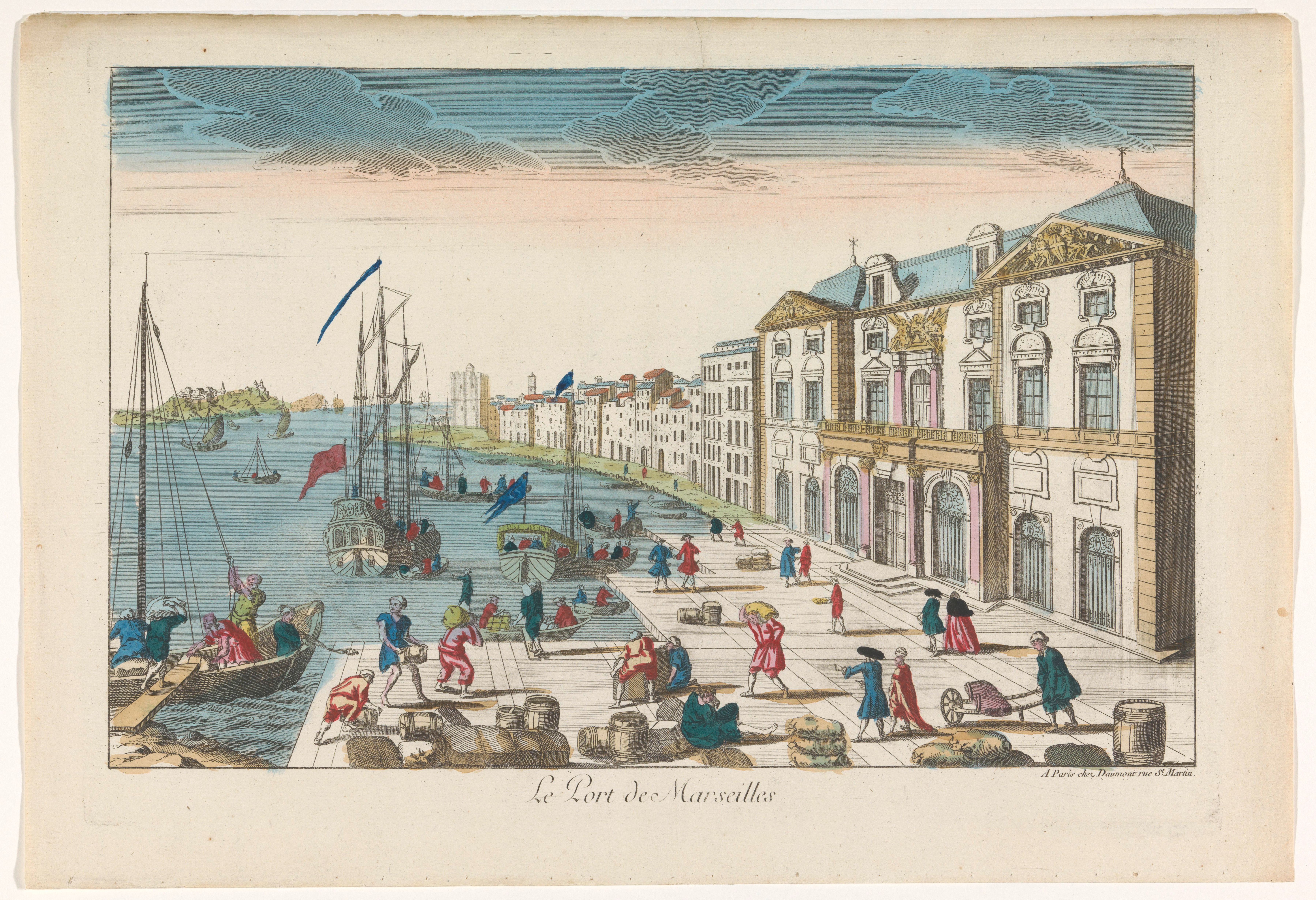 View of the Town Hall and the harbour in Marseille. Source: Jean-François Daumont, 1745-1775, Rijksmuseum Amsterdam.
View of the Town Hall and the harbour in Marseille. Source: Jean-François Daumont, 1745-1775, Rijksmuseum Amsterdam.
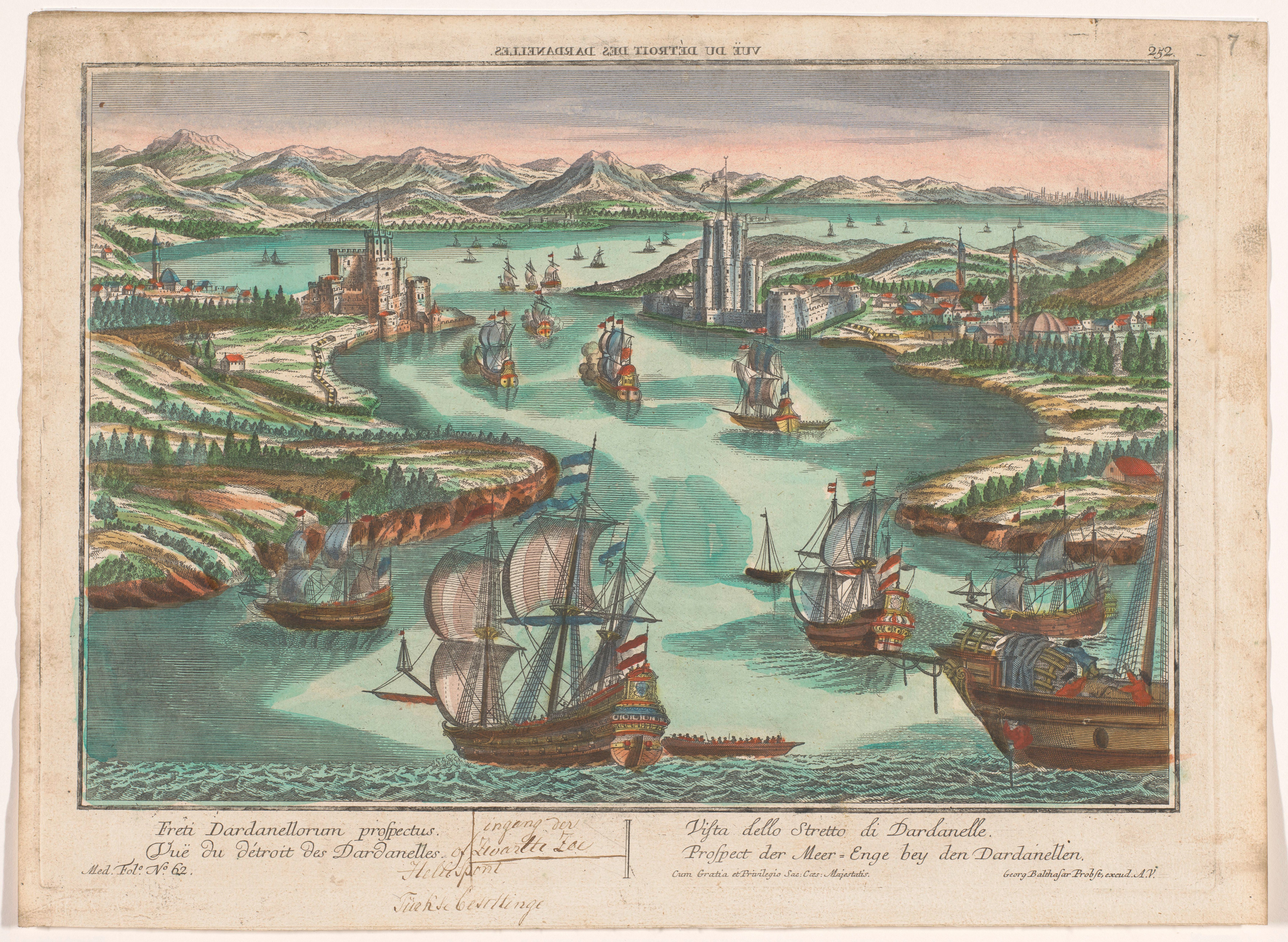 View of the Dardanelles strait. Source: Georg Balthasar Probst, 1742-1801, Rijksmuseum Amsterdam.
View of the Dardanelles strait. Source: Georg Balthasar Probst, 1742-1801, Rijksmuseum Amsterdam.
On 20 July, the men sailed towards the sea again and on the 22nd they sailed through the Dardanelles. During their journey through this strait, the ship’s anchor ropes broke off. Nicolaas describes in detail how the crew tried to repair the ship. They also received help from a number of Turkish ships. The attempts proved successful: on 16 August, the ship was able to continue its journey. In the afternoon they spotted the peninsula Gallipoli, and in the evening they saw the island Marmara. On 17 August, they reached Constantinople (Istanbul). The crew stayed there for over a month, giving Nicolaas ample time to discover the local culture. Incidentally, the crew would have liked to leave earlier, but because many were suffering from dysentery and scurvy, that was not possible.
 View of a cypress garden in Constantinople. Source: George Balthasar Probst, 1742-1801, Rijksmuseum Amsterdam.
View of a cypress garden in Constantinople. Source: George Balthasar Probst, 1742-1801, Rijksmuseum Amsterdam.
On 15 September, the ship was able to sail back out to sea. The men reached Smyrna a week later, where they stayed for six days. The Noordholland passed the coast of Sicily on 11 October, and reached Livorno on the 25th. Six days later they sailed for Toulon, where they arrived on 2 November. Because of their Turkish cargo, they had to spend a long time in quarantine here. On 27 January 1786 they sailed out to sea again. Five days later they arrived in Genoa, where they stayed for a week. During that week, Nicolaas was able to visit this Italian city; the book contains an extensive description of Genoa. In part IV of this blog, I discuss his trip to Genoa. The sailors started to slowly return home. Between 14 February and 2 May, they sailed to the Netherlands via Toulon, Malaga, and the English coast – where they anchored each time to resupply the ship. On 3 May 1786, at 8:00 a.m., they caught sight of the Dutch coast, and at 8.00 p.m. they reached Texel ‘with rejoiced hearts’. (364-365)
Bibliography
Van Rijneveld, N.A., Reize naar de Middelandsche Zee, Amsterdam 1803.
